- News
Leading Design London always reflects the moment we’re in as design leaders, and this year’s conference was no different. With 200 attendees, 15 world-class speakers and nine lunchtime table hosts joining us at the Barbican Centre, the atmosphere carried a cocktail of emotions that many leaders are grappling with in the face of AI, alongside a strong sense of camaraderie throughout the two days.
There’s no simple way to articulate the energy in the room at Leading Design London 2025, but I’d describe it as ‘curiously energetic’. People are in equal measures excited about the opportunities AI might unlock, whilst also holding an important sense of scepticism and concern about what an AI-shaped future could mean and what the consequences might be.
As I reflect on the incredible talks and conversations, here are a few standout takeaways that come to mind…
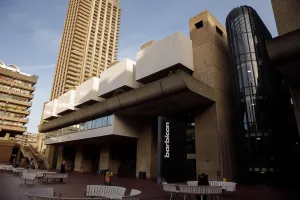
Holding space for intentionality
Being intentional was something that almost every speaker touched on, whether in how we design for AI, how we design in an AI world, or how we use our energy and approach our work.
TB Bardlavens (GM and Director, Product Equity, Adobe) set this up really well on day one, asking what kind of legacy we want to leave and how we can be intentional in shaping it. Intentionality came through strongly in Mary Lukanuski’s (Senior Director, Head of Product Design, Intapp) talk on the value of design in an AI world, and the importance of evolving in an industry that is always changing. Venessa Bennett (Director of UX, Dye & Durham Corporation) encouraged us to reconnect with our purpose, using it as an intentional force to lead our teams through uncertain times.
Daniel Burka and Mahima Chandak (Co-founders, Hard Problems) closed day two by exploring how we can be intentional about the work we choose to do, and how we focus our efforts on problems that genuinely matter to the world.
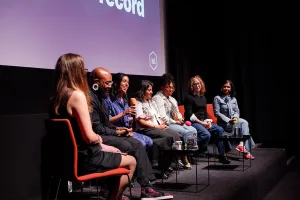
Being strategic about human connection
Human connection may sound obvious, but a clear theme emerged around how we relate to each other and how we think strategically about the people we work with.
Ariba Jahan (Head of Transformation, North America, Anomaly) explored what it means to truly understand the drivers and motivations of our stakeholders. Kevin Hawkins Jr (VP of Design, Research and Content, Monta.com) built on this by sharing practical frameworks for managing stakeholders and earning meaningful buy-in. It was a reminder that human connection doesn’t just happen, it is strategic leadership at work.
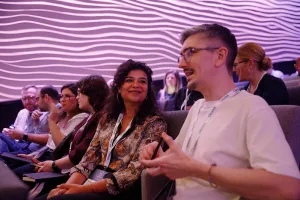
Craft and the value of the human hand
Dalit Shalom (Design Lead, Trust and Credibility, The New York Times) spoke about how we build trust with our users, and Fergo (James Ferguson, Director of Experience Design, OVO) explored how to build trust within the teams we inherit. Both conversations reminded us that trust, creativity and craft are deeply connected. Building on the idea of intentionality, they encouraged us to slow down, resist the urge to ‘just ship it’ and make deliberate choices that bring a human touch to the work we do.
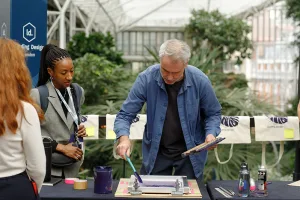
Leading with self awareness
Sabari Majumdar (Senior Design Leader, Booking) spoke about what it means to be an authentic leader, and the importance of creating space for honest reflection.
Sabari and Jonas Grinevičius (VP of Design and Research, Vinted) both expanded on this through the lens of self-awareness. They reminded us that effective design leadership begins with understanding how we are showing up, where we can provide the most value, and how that value is carried back into the organisation, whether through the products we deliver, the teams we support or the business metrics we are measured against.
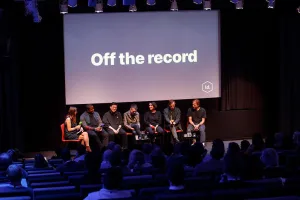
Challenging the status quo
We spoke about design’s need to rebel, to be the provocateur. But how do we do this when the stakes are so high?
Laura Yarrow (Head of Design, Government Digital Service) delivered a brilliant talk about being an intentional rebel, understanding where change needs to happen and how to enact it. As leaders, it is our responsibility to challenge the status quo and act as catalysts for meaningful change.
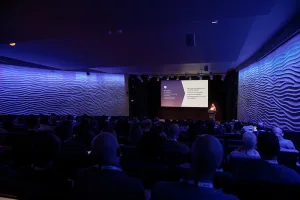
AI: Friend, foe or catalyst?
Building on conversations at Leading Design New York earlier in the year, Chris How (Head of Experience Design, Clearleft) hosted a panel exploring whether AI is a friend, a foe or a catalyst, which one of the panellists summed up perfectly as “yes”.
Although the idea of AI as a foe sat at the forefront, the conversations still felt empowering. We know it will bring seismic change to our craft and to the world more broadly, but we are still in the driving seat with the agency to influence how that change unfolds.
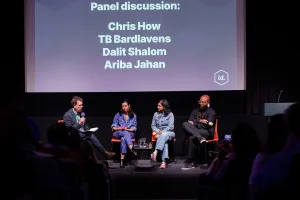
There are no magic formulas, but frameworks are good
One of the amazing things about the conference is that we drop the facade and talk about the realities of design leadership.
Yoel Sumitro (Chief Product Officer, Tiket.com) spoke about how to get traction in business-first organisations. The reality is that there are no magic formulas, but he did provide some frameworks to help make an impact, even when design isn’t front and centre.
Continuing the real-talk, Inayaili León (Director, Design Operations, GitHub) debunked the myth of the well-functioning design team and helped us think about tackling the most valuable problems that need our attention.
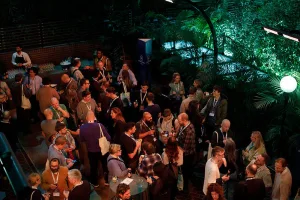
Community and connections
As always, in addition to the value of the content from the stage, our attendees also took so much from simply being together, catching up with old friends and making new connections. We welcomed attendees from around the globe, from design leaders at Google in Silicon Valley to more local attendees from the BBC in London. The conversation flowed during the breaks, and it’s always such a joy to see the camaraderie amongst our attendees and the community which continues long after the conference ends.
See you next year!
If you couldn't make it this year, you can sign up for our Leading Design On Demand platform and gain access to this year’s talks along with our extensive archive.
To make the most of being in the room with the brilliant people from the Leading Design community, grab a super early-bird ticket for 2026!
I'd love to see you there!
Related thinking
- News
The Content Delicatessen at Brighton Digital Festival.
- News


